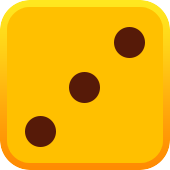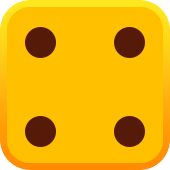












Poker looks simple across a felt table, yet it hides a layered decision tree that rewards clear thinking and discipline. This guide strips away noise and gives you a practical, table-ready path from first shuffle to final card. You’ll learn positions, betting actions, and how five cards decide every pot without memorizing endless jargon. By the end you’ll read situations faster, avoid costly traps, and act with intent on every street. Ready? Let’s play with purpose. Clarity builds confidence.
Poker uses a standard 52-card deck, chips as currency, and a rotating dealer button that sets order. Hands start with forced bets, private cards are dealt, and players act clockwise until a winner is determined. These are poker rules you can apply anywhere. Treat each hand as a routine and you’ll master game rules poker basics while tracking position and stacks.
Win chips by showing the best five-card hand or by making everyone else fold before showdown. Profit comes from value-betting strong hands and bluffing weak ranges, not from chasing draws. Protect your stack by avoiding dominated spots and targeting opponents who call too wide. In tournaments, survival matters because prize jumps are steep; in cash, each chip equals cash value and you can reload between hands.
Hands rank by the best five cards; kickers settle many marginal spots. Memorize the order once and your in-hand math gets faster, especially on draw-heavy boards. Use the memory hook poker rules and hands to connect ranking knowledge with action planning. When equal pairs occur, apply rules poker pair high card logic so unmatched kickers determine the winner.
|
Rank |
Combination |
Example |
|
1 |
Royal Flush |
A♥ K♥ Q♥ J♥ 10♥ |
|
2 |
Straight Flush |
9♣ 8♣ 7♣ 6♣ 5♣ |
|
3 |
Four of a Kind |
Q♠ Q♥ Q♦ Q♣ 7♦ |
|
4 |
Full House |
J♣ J♦ J♥ 8♠ 8♦ |
|
5 |
Flush |
A♣ J♣ 9♣ 6♣ 3♣ |
|
6 |
Straight |
10♦ 9♠ 8♣ 7♦ 6♥ |
|
7 |
Three of a Kind |
7♠ 7♦ 7♥ K♣ 2♦ |
|
8 |
Two Pair |
K♠ K♦ 4♣ 4♦ 9♠ |
|
9 |
One Pair |
A♠ A♦ Q♥ 7♣ 3♦ |
|
10 |
High Card |
A♦ 10♣ 8♥ 5♠ 2♦ |
Clear vocabulary speeds decisions in a poker rules casino and avoids disputes. The pot is chips contested in the hand; side pots form when someone is all-in. Table stakes limit you to chips on the table; formats include no-limit, fixed limit, and pot limits. Position is where you act relative to the button; later seats gain info and control pot size.
Blinds are forced bets that seed the pot before cards; some formats add an ante from every seat or a big blind ante. Typical blind structure is Small Blind/Big Blind, with the button one seat clockwise from the Small Blind. The pot starts with these forced chips and grows through voluntary wagers during each betting round. Rooms publish levels so you know when blinds rise and how antes apply poker rules pair high card.
|
Seat/Item |
Amount |
Notes |
|
Small Blind |
$1 |
First post-flop |
|
Big Blind |
$2 |
Last pre-flop |
|
Button |
— |
Last post-flop |
|
Ante |
$0.25 each |
Common in MTTs |
On your turn you may check, bet, call, raise, or fold depending on prior action. Checking passes the option without adding chips; betting opens the wager; calling matches an existing bet; raising increases pressure; folding concedes the pot. Learn pot odds and consider stack sizes so your folding and raising choices stay disciplined under pressure. State actions clearly and push rules poker game chips forward in one motion to avoid confusion.
|
Action |
Effect |
When allowed |
|
Check |
Pass without betting |
If no bet pending |
|
Bet |
Open the pot |
If no bet pending |
|
Call |
Match a bet |
If a bet pending |
|
Raise |
Raise the bet |
If a bet pending |
|
Fold |
Give up your hand |
When facing a bet |
Here is poker rules step by step flow for Texas Hold’em, the most common variant. Action moves clockwise from the blinds. Use this as a game rules poker checklist for action order and pot growth. After the final call, the best five-card mix of hole and board cards wins.
|
Stage |
Cards Dealt |
Who Acts First |
Community Cards Added |
|
Pre-Flop |
2 to each player |
UTG (left of BB) |
0 |
|
Flop |
— |
Left of button |
3 |
|
Turn |
— |
Left of button |
+1 (4 total) |
|
River |
— |
Left of button |
+1 (5 total) |
|
Showdown |
— |
N/A |
— |
Each player receives two private cards. Action starts left of the Big Blind and proceeds clockwise with fold, call, or raise. In cash games, standard opens are 2–3 big blinds; tournaments use smaller sizes with shallow stacks. If unsure, follow how to play poker easy rules: value strong pairs and big aces, avoid dominated offsuit hands, and respect early-position raises.
The dealer burns one and reveals three community cards. Evaluate whether you have a made hand, a strong draw, or only backdoors. Bet smaller on dry textures that favor the pre-flop raiser; size up on coordinated boards where protection matters. Always plan future streets so your line is coherent against likely ranges and stack depths.
After another burn, the fourth community card appears and a second post-flop betting round begins. Here equities compress; revisit ranges and choose to barrel, control, or give up. Keep turn and river explained in one mental package because decisions here shape your river plan. Compare pot size to remaining stacks so your bets leave sensible follow-up options.
The rules poker game dealer burns once more and places the fifth community card face-up. With no cards to come, decisions center on thin value, bluffs, and bluff-catchers. Target worse hands that call and better ones that may fold before picking a size. When facing a bet, expect call, fold, or raise—avoid hero calls that don’t beat credible value ranges.
If a river bet is called, the last aggressor shows first; otherwise reveal in seating order. Read your best five-card combo from any mix of hole and community cards. Kickers settle many one-pair and two-pair spots; identical five-card holdings split the pot. If an odd chip remains after a split, houses assign it by posted rules such as first seat clockwise from the button.
Respectful conduct keeps games friendly, fast, and profitable. Act in turn, protect your cards with a cap, and keep stacks tidy and countable. Do not reveal mucked cards or coach live hands; avoid slowrolls and string bets entirely. When unsure, ask the dealer calmly—Poker the rules favor clarity and staff can help. Before you play, make sure to read the terms on the bonus page so you know the wagering requirements.
Maintain a steady tempo so others can follow action. Speak clearly, announce bet sizes, and avoid splashing the pot, which obscures counts. Keep food and drinks off the betting line and wipe hands before touching cards or chips. Courtesy matters: congratulate winners, own your losses, and tip dealers where customary.
Angle shooting exploits technicalities for an unfair edge and is unacceptable. Examples include hiding high-value chips behind small ones, feigning a fold to provoke action, or misstating a wager to trap. Protect yourself by keeping your cards visible, tracking chip denominations, and clarifying unclear action with the dealer. Call the floor if behavior seems shady; clear rulings protect the rules poker game for everyone.




